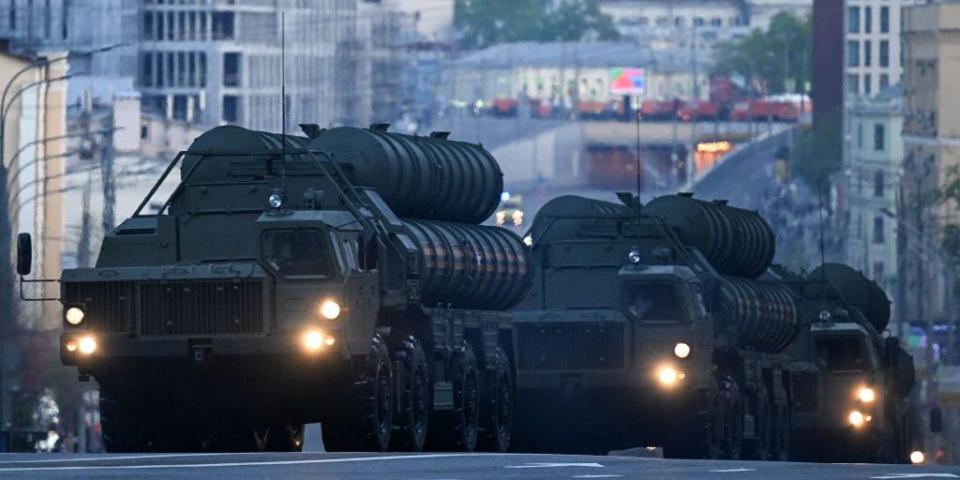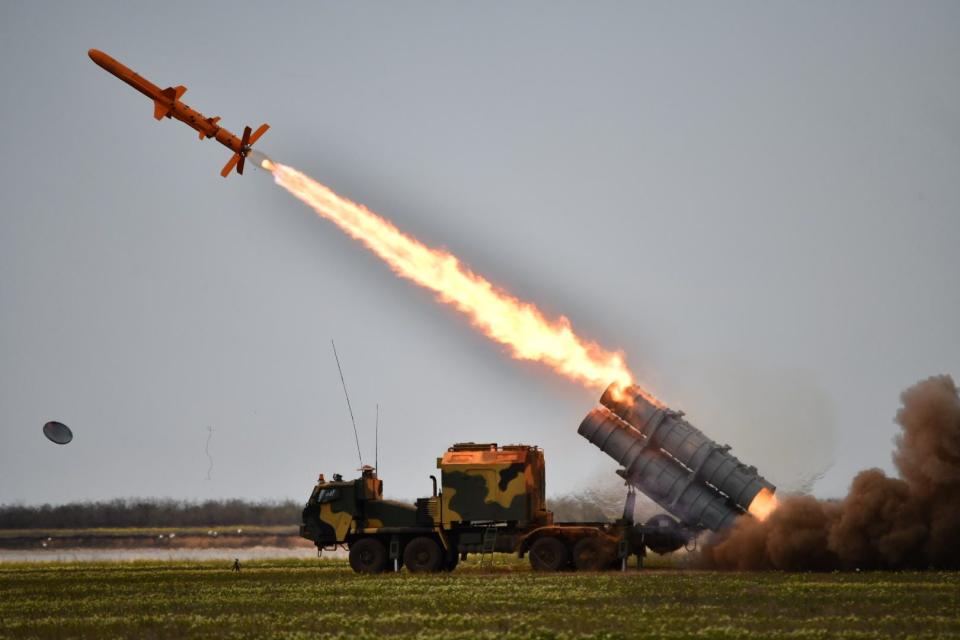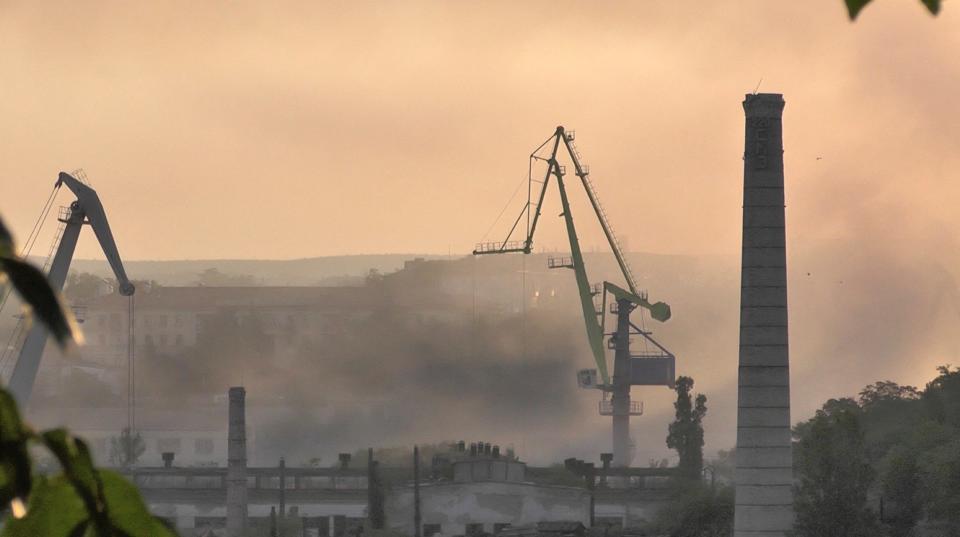Ukraine appears to be hunting Russia's formidable S-400 air defense systems in Crimea with modified Neptune anti-ship missiles

Ukraine modified an anti-ship cruise missile for land-attack missions.
The Neptune missile, which was used to sink the Russian ship Moskva, is now hunting down air defense systems.
In roughly the past three weeks, Russia has lost a pair of formidable S-400s to these missile strikes.
Ukraine is turning up the pressure on Russian forces in Crimea and seems to be hunting S-400 air-defense systems with an anti-ship cruise missile reworked for land-attack missions.
A modified Neptune anti-ship missile struck and destroyed an S-400 Triumf near Olenivka in western Crimea on August 23, according to Ukrainian officials, and damaged the launcher and the surface-to-air missiles, and per multiple reports, another S-400 was taken out in an attack involving the cruise missile, as well as drones, on Thursday in Yevpatoriya, which is also located in the western part of Crimea.
The R-360 Neptune is a subsonic cruise missile that was initially built by Ukraine to counter adversary naval assets. In April 2022, just a couple of months after Russia's invasion, Ukraine sank the Project 1164 Slava-class cruiser and Black Sea Fleet flagship Moskva with a pair of the ground-launched missiles. Russia claims the ship was lost to fire.
A senior Ukrainian official hinted earlier this year that the Crimean peninsula, which Russia illegally annexed following its 2014 invasion and Ukraine has vowed to liberate, could serve as a testbed for new weapons.
Secretary of the National Security and Defense Council Oleksiy Danilov said in April that "Crimea is the territory of Ukraine, and we will test and use there any weapons not prohibited by international laws that will help liberate our territories."
In a separate interview, he indicated that tests of "new types" of weapons were possible.

Around that time, a Ukrainian defense official told The War Zone that "Ukraine is working to modify Neptune missile to strike land targets." They noted that "a new guiding/homing system is required, but Ukrainians are working on that."
"Once we get that, the Neptunes can hit targets 360 km (about 225 miles) away," the official told the defense publication. "We are pretty close."
That official told The War Zone in August that Ukraine developed a guidance system that uses GPS to send the missile to a pre-determined location and then uses a passive infrared image seeker to find a target matching a preset image.
It's a design that makes it much harder for Russian defenders to jam or detect, and is one of the longest range weapons in Ukraine's arsenal.

This valuable domestic capability offers a ground-launched alternative to the air-launched Storm Shadow/SCALP-EG cruise missiles provided by the UK and France for strikes on targets roughly 150 miles away. The Ukrainians have long sought the US military's Army Tactical Missile System (ATACMS), but Washington's been reluctant to send these weapons.
And while the Russian armed forces attempted to take out Ukraine's Western-provided Patriot batteries with its advanced Kinzhal air-launched ballistic missile but was unsuccessful, Kyiv's forces are apparently finding success with the Neptune at eliminating Russian S-400s.
The successor to the earlier S-300s, the S-400 Triumf, known to NATO as SA-21 Growlers, is a long-range, road-mobile surface-to-air missile system able to effectively engage a wider variety of aircraft and incoming ballistic targets at greater range. This Russian system is considered to be among the world's most advanced air-defense weapons.
But in the past three weeks, Russia has reportedly lost two of the systems to missile strikes, raising questions about its capabilities, especially considering that air defense systems tend to have a better chance of intercepting an threat when the system is targeted.

The missile strikes on Russian air defenses come amid Ukraine's ongoing counteroffensive in the eastern and southern part of the country, regular Ukrainian attacks on Moscow and Russian aviation assets like bombers and airlift planes at bases inside Russian territory, and attacks and even raids in and around occupied Crimea.
Retired general Ben Hodges, who previously served as the commander of US Army Europe, said on social media that Ukraine has "a very sophisticated approach" and that the "Ukrainian General Staff is running rings around the Russian General Staff."
Read the original article on Business Insider


